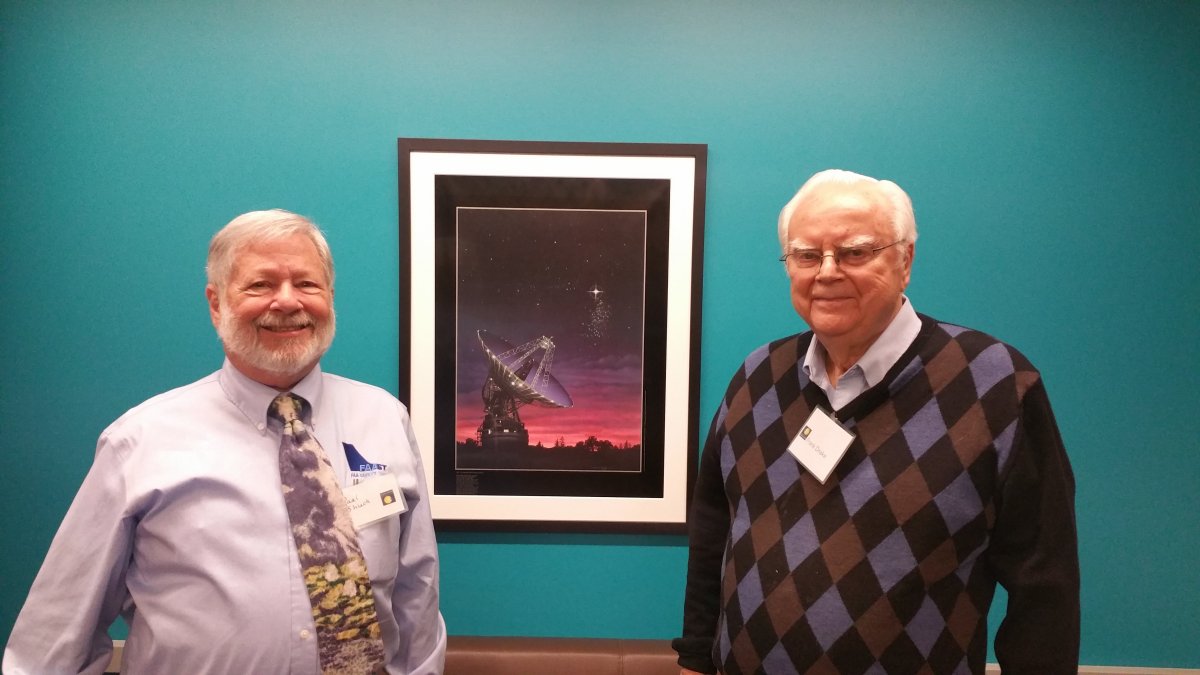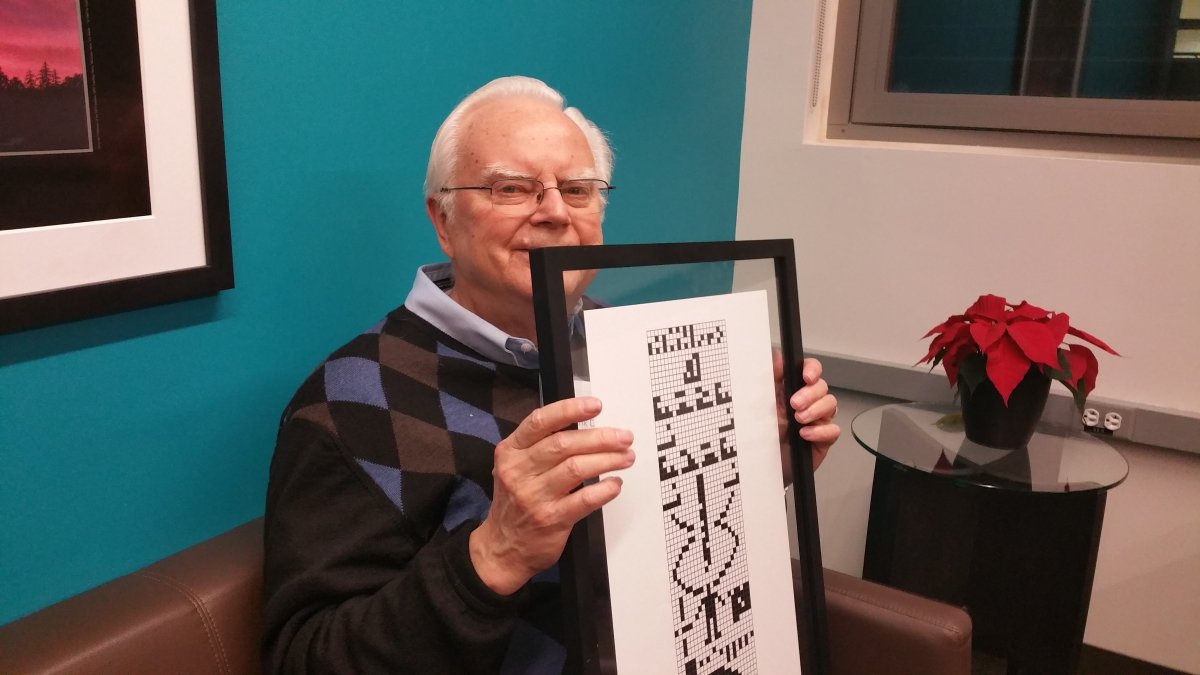

email the Webmaster | entire website copyright © The SETI League, Inc. this page last updated 3 September 2022 |
Top of Page |
 In Memoriam:
In Memoriam:It was an idea whose time had come, but nobody dared admit that out loud. Frank Drake, in particular, was keeping silent. Like many of his generation, he had long speculated about the existence of extraterrestrial life, and pondered how we humans might probe for direct evidence of our cosmic companions. Now, in 1959, the young astronomer was finally in a position to do more than ponder. At 29, he had just completed graduate school, the ink on his Harvard diploma as wet as he was behind the ears. As the new kid on the block at the National Radio Astronomy Observatory, he had access to the tools necessary to mount a credible search for radio evidence of distant technological civilizations. Drake knew enough to tread lightly; a publicly announced hunt for Little Green Men would be tantamount to professional suicide. So, he approached his superior with understandable trepidation.
Fortunately, NRAO director Otto Struve was sympathetic, even as he counseled caution. Having theorized that the slowed rotation rate of certain stars suggested that their angular momentum had been dissipated in the formation of planets, Struve himself speculated on the probable existence of extraterrestrial civilizations. So, he authorized Drake to use the 85 foot diameter Howard Tatel telescope in his off-duty time, to conduct what was to become the world’s first observational SETI experiment. Only, do so quietly, Struve warned; we don’t want the word getting out that we’re using a government facility to hunt for aliens.
Drake had already run the numbers. He knew the most likely frequency on which to search, and the best receiver circuitry to employ. He had picked his candidate stars, two nearby sunlike ones which he reasoned were likely to harbor habitable planets. He had selected his research methodology, and proceeded (very quietly) to assemble his listening station.
And then, the Nature article hit the newsstands. “Searching for Interstellar Communications” was written by two Cornell University professors, Giuseppe Cocconi and Philip Morrison, and it proposed, in brief but clear detail, the very experiment which Drake was preparing to conduct! This very first scientific article in the not-yet-named discipline of SETI was complete, down to the selection of frequencies and target stars – and it paralleled Drake’s work exactly. Neither the team of Morrison and Cocconi, nor that of Drake and Struve, knew anything about the others’ interest in this esoteric study. Both groups had arrived at the same crossroads in history, completely independently, in an elegant example of what I like to call the Parenthood Principle: when a great idea is ready to be born, it goes out in search of a parent. Sometimes, it finds more than one.
Now, Schrodinger’s Cat was out of the bag, and Drake had no choice but to go public. The publicity he received was widespread, and generally enthusiastic; the scientific community, it appeared, was ready to embrace the notion of SETI. Struve began writing about the possibility of extraterrestrial life: “An intrinsically improbable event may become highly probable if the number of events is very great… it is probable that a good many of the billions of planets in the Milky Way support intelligent forms of life. To me this conclusion is of great philosophical interest. I believe that science has reached the point where it is necessary to take into account the action of intelligent beings, in addition to the classical laws of physics."
His cover now blown, Drake soon found himself in the company of other open-minded scientists and technologists, who collectively found themselves unwitting parents to a newly emerging scientific discipline. Among those contacting Drake after reading about his nascent experiment were microwave communications expert Bernard M. Oliver, then vice-president of engineering at Hewlett-Packard (and, later, president of the Institute of Electrical and Electronic Engineering); Dana Atchley, president of Microwave Associates in Massachusetts; and a young planetary scientist, Berkeley post-doctoral researcher Carl Sagan. These individuals, as well as Struve, Morrison, and a handful of others, were ultimately to become SETI’s patriarchs. (Cocconi, though having co-authored the seminal SETI article with Morrison, went on to distinguish himself in particle physics research at CERN, never to return to the SETI fold.)
Drake named his search Project Ozma, after the princess of Oz in the L. Frank Baum books, as he saw his efforts leading humans to a far-off and exotic land. Launched in April of 1960, and running only through May of that year, Ozma searched but two stars, on a single frequency, for mere dozens of hours, but established the protocols, and laid the groundwork, for all subsequent SETI experiments. It was a paradigm-shifting endeavor, successful for its audacity, if not for its discoveries.
And yet, for one brief moment early on, Frank Drake thought he had hit paydirt. As he slewed his antenna off of Tau Ceti and onto Epsilon Eridani, he was greeted with a strong, periodic, pulsed signal on 1420 MHz, the hyperfine transition emission line of interstellar hydrogen atoms proposed by Cocconi and Morrison, and still favored as a promising hailing frequency for interstellar communications. “My god,” Frank mused, “can it really be this easy?”
The next day, when the signal reappeared, Drake was ready with a second, low-gain antenna. The pulses were there as well, sadly disproving their extraterrestrial origin. But they were not exactly terrestrial interference, either. The rate at which the phantom signal traversed the sky suggested that it was emanating from an aircraft cruising at unprecedented altitude – perhaps eighty thousand feet! Of course, in April of 1960, no known aircraft could reach the stratosphere. Such an aircraft, as it happened, didn’t “come into existence” until the following month, when Francis Gary Powers was shot down over the Soviet Union. (Frank wisely decided to withhold publication of this positive result, so he never did receive proper credit for “discovering” the U-2.)
A year after Project Ozma's brief tenure, Drake convened at Green Bank the first scientific conference devoted to modern SETI. He gathered together ten scientists from disparate disciplines. They spent a week contemplating areas from the physical, biological, and social sciences which had relevance to the question of extraterrestrial technological civilizations, and how to communicate with them. The assembly included the six SETI patriarchs already mentioned, along with J. Peter Pearman of the National Academy of Sciences’ space science board, Su Shu Huang of NASA, University of California chemist Melvin Calvin (whose Nobel prize was to be announced during the Green Bank meeting), and neuroscientist John C. Lilly, who was then studying the language of dolphins, and attempting to communicate with these intelligent Earth mammals. The group called themselves the Order of the Dolphin, a tribute to Lilly’s studies into human-dolphin communication, which they deemed a worthy metaphor for the challenge of interspecies communications on a grander, cosmic scale.
Drake chalked on a blackboard seven topics for discussion, which would comprise the agenda for the weeklong meeting. They included stellar formation, planetary formation, the existence of planets within habitable zones, the emergence of life, the evolution of intelligence, communications technology, and the longevity of technological civilizations.
Having established that the emerging discipline of SETI was to encompass fields as diverse as stellar evolution, planetary astronomy, environmental science, biology, anthropology, engineering, and sociology, Drake next did something almost whimsical, which assured his lasting fame: he strung these seven factors together into an equation.
The idea was to multiply seven unknowns together, and in so doing, to estimate N, the number of communicative civilizations in our Milky Way galaxy. The Drake Equation, as it is now called, appears in every modern astronomy textbook. It is a marvelous tool for quantifying our ignorance: never intended for quantification, but quite useful in narrowing the search parameters. We still use it, not to seek a numerical solution, but rather to help us to focus our thinking in designing our searches for life.
Drake's seven factors are cleverly ordered, from solid to speculative. Today's astrobiology and bioastronomy meetings are similarly structured. When the equation was first published, only the first factor (the rate of stellar formation) was known to any degree of certainty. In the intervening decades, Drake’s equation has guided our research in an orderly manner, from left to right, so that today we have a pretty good handle on Drake factors two and three (planetary formation, and habitable zones). The remaining four factors are still anybody's guess, and it may well take decades more before our research begins to quantify those areas of our ignorance. But the Drake Equation is most valuable in guiding our research, because it asks the important questions. It is still up to us to answer them.
The lessons learned during the brief course of Project Ozma, amplified and expanded at the Order of the Dolphin meeting, have informed and enriched every subsequent SETI experiment. The interdisciplinary nature of the science now known as SETI was articulated at the outset. Drake’s work clearly showed that Earth’s technology was at last approaching the level at which a disciplined search for extraterrestrial microwave emissions was becoming feasible. The quietest part of the electromagnetic spectrum was explored then, as now. Highly directional, high gain parabolic antennas, coupled to very low noise microwave preamplifiers, remain our preferred observational tools. Although the advent of multi-channel spectrum analyzers means we no longer have to select a single channel to scan, SETI scientists continue to speculate as to universal calling frequencies that alien civilizations might employ to make their presence known. Concentrating our efforts on known, nearby sun-like stars remains an accepted technique for planning targeted searches, one of the two primary search modalities still practiced.
Most importantly, Frank Drake’s early efforts began to lend legitimacy to an endeavor previously considered fringe science. Today, the preponderance of informed opinion holds that we inhabit a universe teeming with life. The only matter for speculation is whether we yet possess the technology necessary to detect it. The emphasis here is on yet. Most of us contemplating such a detection no longer argue “if,” but rather “when.”
Drake subsequently distinguished himself as Director of the famed Arecibo Observatory, from which he orchestrated the Arecibo Message, humankind’s first deliberate microwave transmission to the stars. His astronomical research has led to important discoveries about pulsars and Jovian radio emissions. Long a distinguished academic, he is today remembered as the godfather of observational SETI. For the balance of his life Frank remained much in demand as a speaker at scientific meetings. He was deeply involved in SETI science fully six decades after Project Ozma, serving as a Director of the SETI Institute in California, and on the scientific advisory board of the nonprofit SETI League. He died this week at the age of 92.
This, then, is Frank Drake’s legacy: more than just a friend and mentor to all the world‘s SETI scientists, he singlehandedly turned science fiction into credible, respectable science.


email the Webmaster | entire website copyright © The SETI League, Inc. this page last updated 3 September 2022 |
Top of Page |